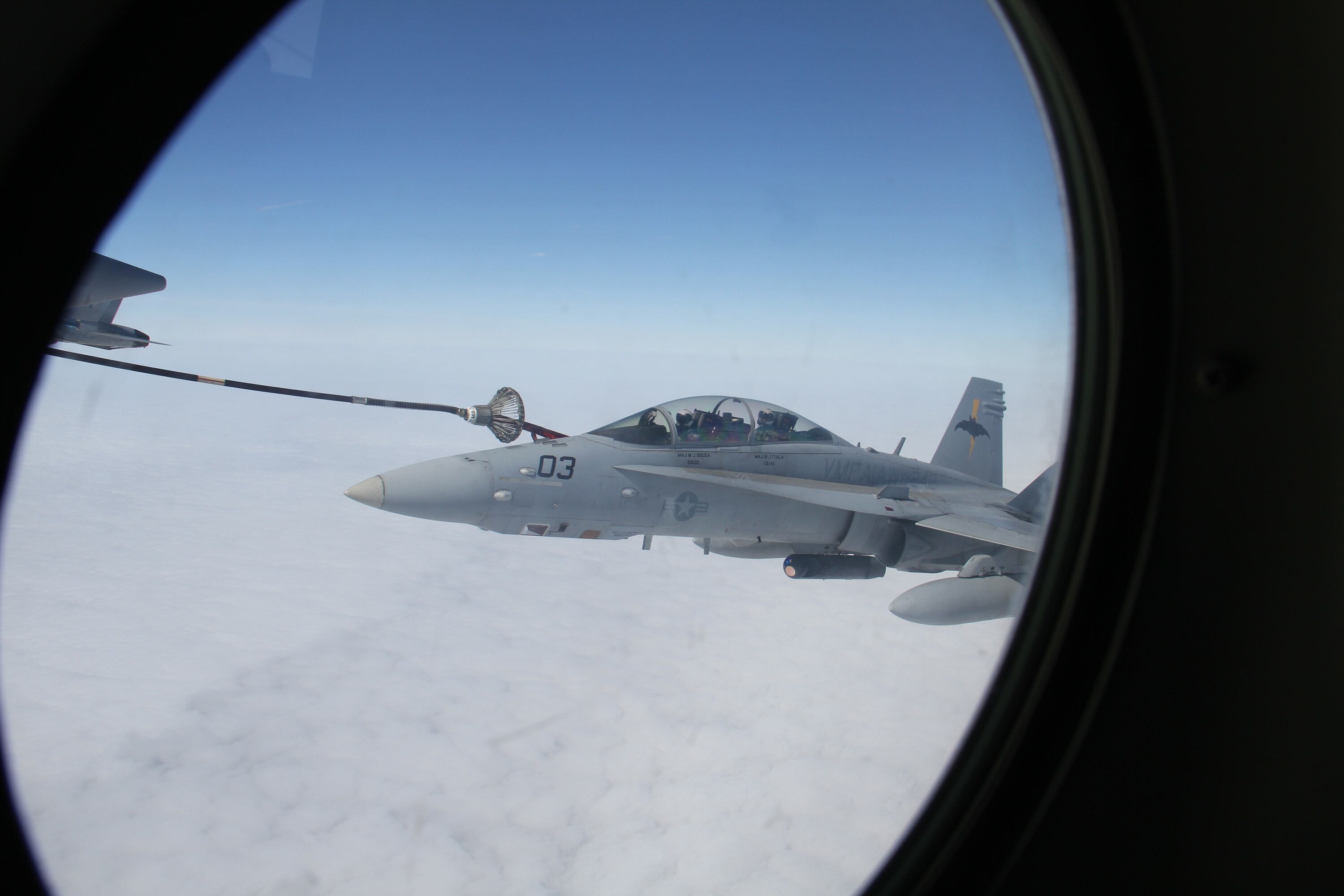U.S. Pacific Air Forces is about to launch a major training exercise at ranges in Alaska and the Gulf of Alaska, that aims to sharpen how troops from multiple services work together during combat or other crises.
Northern Edge 2019, a biennial joint exercise taking place from May 13 to 24, will include about 10,000 troops and 250 aircraft from the Air Force, Navy and Marine Corps, as well as five Navy ships, PACAF said in a Wednesday release. The Navy’s contingent will include an aircraft carrier from the Pacific Fleet for the first time in a decade.
It will be the largest military training exercise in Alaska this year, and include participants from the continental United States and some installations in the Indo-Pacific area, as well as some virtual participants taking part elsewhere in the United States. The release did not say whether Army or Coast Guard personnel will take part in this exercise, but members of those services participated in the last Northern Edge in 2017.

The nearly two-week exercise will also be much larger than Northern Edge 2017, which involved about 6,000 personnel and 175 fixed-wing aircraft.
PACAF said the exercise is meant to prepare joint forces to respond to events in the Indian and Pacific oceans, and is one of several U.S. Indo-Pacific Command exercises scheduled for 2019. Northern Edge is expected to help them improve their tactical combat skills and command, control and communication relationships, and to develop plans and programs for the joint forces to work together.
Along with Indo-Pacific Command and PACAF, participating units will include the U.S. Pacific Fleet, Marine Corps Forces Pacific, Air Combat Command, Air Mobility Command, Air Force Materiel Command, U.S. 3rd Fleet, the Air National Guard, the Air Force Reserve and the Naval Reserve.
Residents of Kodiak, Alaska, have regularly raised their concerns over the exercise and its impact on the environment. In March, local citizens met with Navy and Air Force officials and expressed concerns that marine species and ecosystems could be harmed. They asked for the training to be moved to the fall, to avoid hurting species that are active at this time, and some felt the same issues are discussed year after year without any progress.
“You take our comments and say you will consider them, and nothing changes,” Stacy Studebaker of Kodiak said.
But military officials said the relatively calmer weather and seas of spring make this a better, safer time to hold the exercise.
“Safety is one of the reasons we don’t get into exercising at times when the seas are typically rougher,” Air Force Col. Barley Baldwin said at a March meeting, the Associated Press reported.
Stephen Losey is the air warfare reporter for Defense News. He previously covered leadership and personnel issues at Air Force Times, and the Pentagon, special operations and air warfare at Military.com. He has traveled to the Middle East to cover U.S. Air Force operations.





